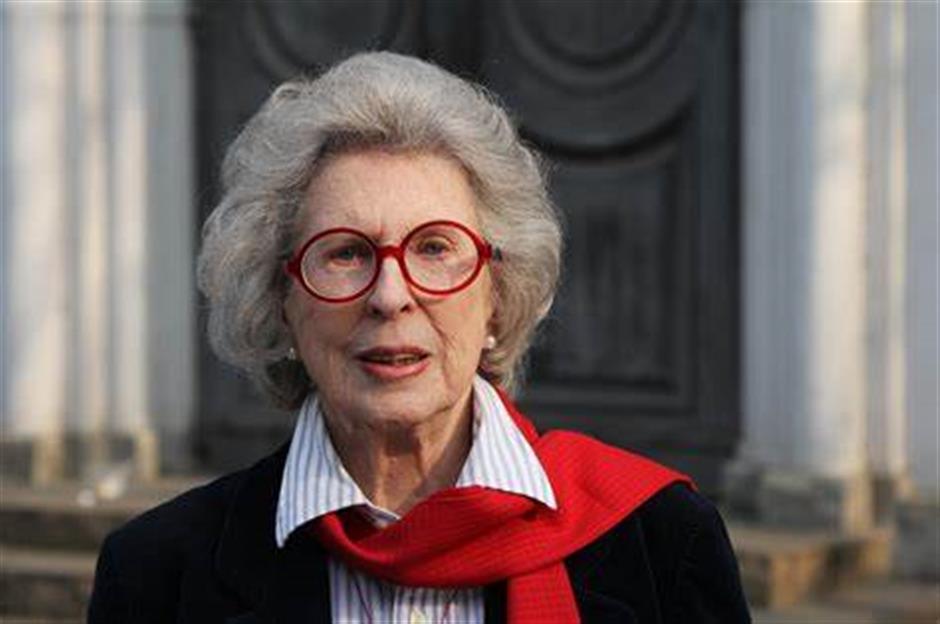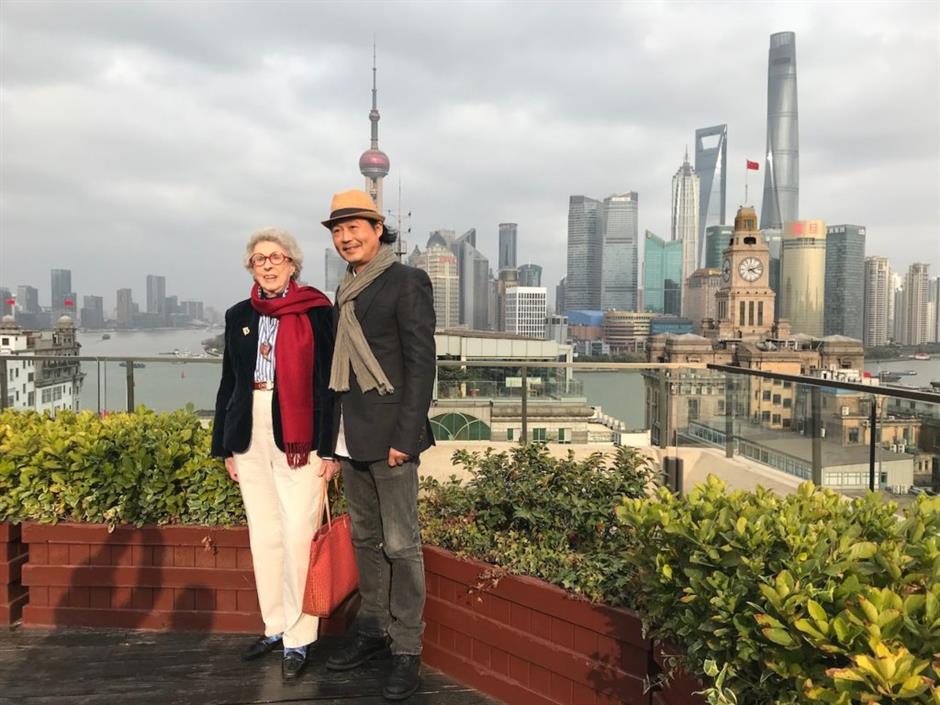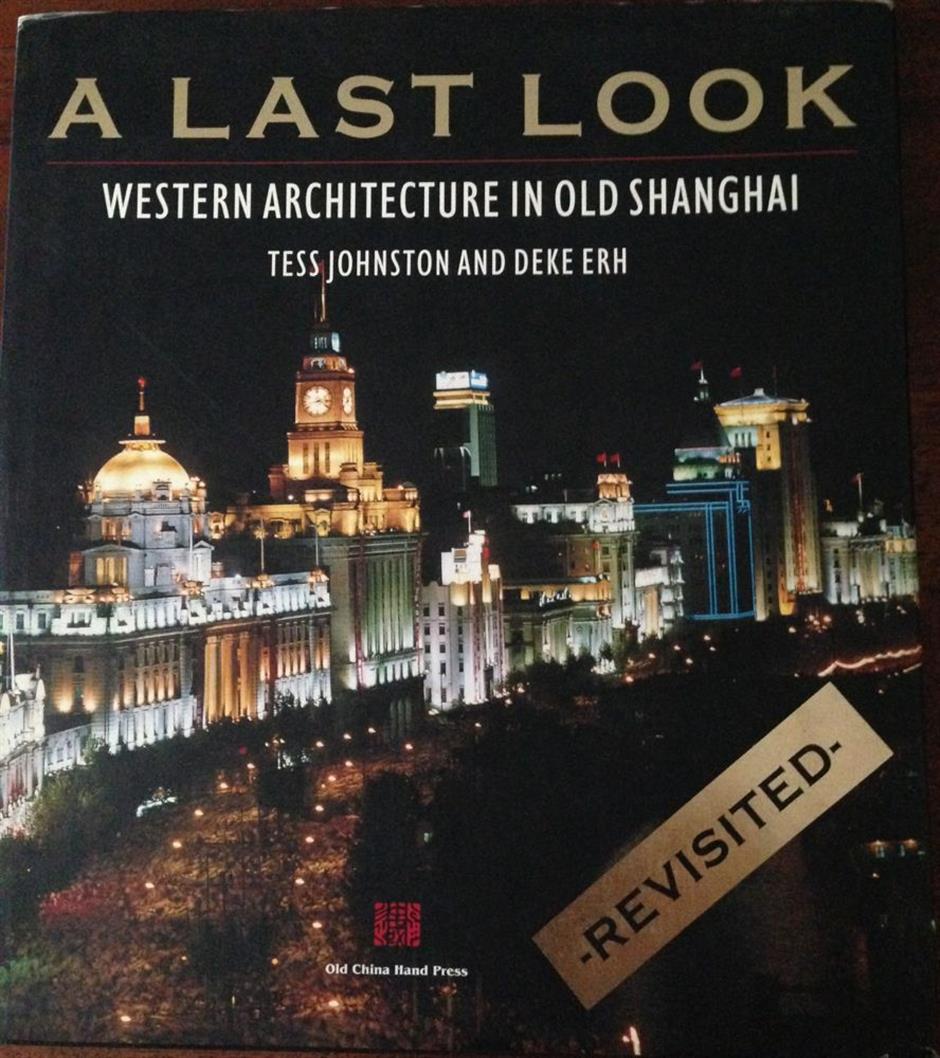
Tess Johnston, a resident of Shanghai for over 30 years, who pioneered the study of old Shanghai, has died aged 93.
A native of Charlottesville, Virginia, the United States, Johnson arrived in Shanghai in 1981, just two years after the establishment of US-China relations and a year after the US consulate opened.
She would live in Shanghai for over 30 years, researching, writing and mentoring a generation of writers and scholars on pre-1949 Shanghai – a field that did not exist until she began researching and writing about it.
In addition to Shanghai, Johnston worked in Dusseldorf, Berlin (East and West), Tehran, New Delhi, Paris and in Vietnam for seven years during the Vietnam War, the latter for USAID.

Tess Johnston (1931-2025)
"I had never seen anything like Shanghai in 1981," said Tess Johnston of the city when she first arrived. "I had never been to a foreign country that looked so utterly and completely Western. It was perfectly preserved, a cross between Warsaw in 1938 and Calcutta, a totally Western city with an Asian population. It was a scruffy showcase of Western architecture – and it was absolutely wonderful."
Johnston, who died on September 14 in Washington, DC, at 93 from COVID-19, had arrived in September 1981 to work at the US consulate, just two years after US-China diplomatic relations were established. Shanghai, its architecture and its pre-1949 history would captivate her for the rest of her long life and keep her in the city for over 30 years.
Johnston pioneered the study of the Western presence in old Shanghai (1842-1949), preserving the historic city in her books and talks before it changed beyond recognition. Her research materials were always open to anyone interested, and a generation of visiting scholars and writers cite her generosity and mentorship as being instrumental to their work in a field that did not exist until she began researching and writing about it.
She also helped those who lived in Shanghai before 1949 recover their histories, helping them find their old homes, schools and workplaces, including some of the 20,000 Jewish refugees who found safe haven in Shanghai during World War II.
A native of Charlottesville, Virginia – despite living all over the world for half a century, she never lost her charming Southern drawl, in English and Chinese – Johnston joined the Foreign Service in 1953. She spent 33 years serving in places as diverse as East Berlin, New Delhi, Tehran and Paris.
During the Vietnam War, she worked for USAID as secretary to the legendary John Paul Vann, subject of Neil Sheehan's Bright Shining Lie. She recalled that period, including running in high heels to find shelter during the Tet Offensive – in "A War Away: An American Woman in Vietnam, 1967-1974," calling it "the most exciting period of my life."
But it would be Shanghai that captured her curious mind and her heart.
In 1981 Shanghai, historic Western architecture was little more than an embarrassing reminder of a hundred years of forced foreign domination, the "Century of Shame." No one wanted to talk about the history of these buildings, owned by imperialists and blacklisted capitalists, leave alone research and write about them. Johnston quickly realized that her curiosity was not going to be easily satisfied, and she was going to have to be the one to do it.
All too aware that this museum of pre-1949 architecture could not last, she researched and documented the city until 1986 when her next posting took her to Paris. When an opportunity arose to return to Shanghai in 1989, she cut her Paris posting short. It was then she met Shanghainese photographer Deke Erh.

Tess Johnston and Deke Erh on the rooftop of the Continental Bank in Shanghai

Their first book together, "A Last Look: Western Architecture in Old Shanghai (1993)" was the first to highlight the city's built heritage, the very first visual record of its incredible architectural legacy. At the time, there were no historic plaques on the buildings yet, no hint of what these buildings had been. In some ways, she and Erh gave Shanghai back its history.
Johnston and Erh would go on to collaborate on 25 books, including one on Shanghai Art Deco, 15 volumes on Western architecture and the Western presence in treaty ports throughout China, as well as a series of walking guides through the history of different Shanghai neighborhoods.
Johnston retired from the Foreign Service in October 1996, but stayed on in Shanghai for the next 20 years, co-founding a heritage organization, Historic Shanghai, conducting walking tours, giving lectures, researching and writing books. She repatriated to the US in 2016, at 85, but until COVID-19 hit in 2020, she returned to Shanghai each year, still selling out her speaking engagements.
In the introduction to "A Last Look," Johnston and Erh say their goal was "to preserve these Western monuments for future generations through our photographs, our research, and the collective memories of the buildings' former architects, builders and tenants."
Johnston often said that she was grateful that she was here to do just that, arriving "at the right time and in the right place" to document Shanghai as it was. So are we, Tess, so are we.
(The author is a co-founder of Historic Shanghai, with Tess Johnston, and a principal at PR agency AsiaMedia.)

